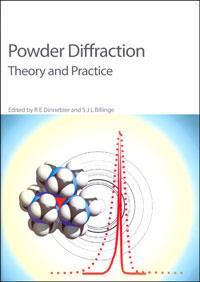Powder diffraction theory and practice
Powder diffraction theory and practice
R E Dinnebier and S J L Billinge (eds)
Cambridge, UK: RSC Publishing 2008 | 604pp | ?59.00 (HB) ISBN 9780854042319
Reviewed by J Paul Attfield

This book provides an excellent overview and much detail of the state-of the-art in powder diffraction methods. Experimental strategies, modelling diffraction intensities and peak shapes, indexing patterns, solving and refining structures, phase analysis, microstructural information and non-ambient conditions are among the topics of 17 chapters contributed by leading powder diffraction scientists. The emphasis is very much on ’how to’, and the editors have provided a coherent framework and style that generally avoids overlap between chapters.
Although powder x-ray diffraction dates back to 1916 with the pioneering experiments of Debye and Scherrer, the wealth of information contained in the overlapping Bragg and other scattering contributions was difficult to realise until computational fitting methods were introduced by Rietveld in 1969. A particular strength of this book is to link the theoretical aspects and mathematical descriptions of diffraction data directly to relevant fitting programs through a comprehensive review of available software in the final chapter.
Useful examples are scattered throughout this work, but in its entirety it perhaps fails to represent the wide range of applications that powder diffraction now finds - high temperature superconductors, microporous catalysts, pharmaceutical molecules, engineering components and even protein structures are just a few important examples that receive little or no mention.
Time-of-flight neutron methods are also covered very briefly although major new facilities in the UK and USA are being commissioned at present.
The book will be an invaluable resource for experienced practitioners and new research students alike. It provides an approachable, comprehensive description of modern methods and their computational implementations, although additional sources will be needed to appreciate the many applications of powder diffraction.












No comments yet